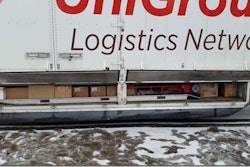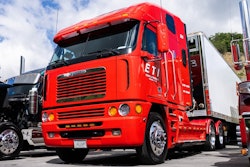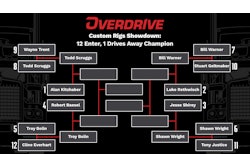*One in six families in America doesn’t always know where its next meal is going to come from.
**Every two Americans wastes enough food to feed a third.
***More food is wasted in the supply chain in 19 days than is distributed by major food banks all year.
****43% of food waste is at the personal consumer level. The remaining 57 percent is left on fields, thrown out in processing and distribution, or scraped off plates in buffets and restaurants.
I knew none of these things until I had an opportunity to speak with Roger Norris Gordon, the president and one of the founding members of Food Cowboy. He, along with his brother Richard Gordon and Dr. Barbara Cohen, have come together to organize solutions to hunger by reducing food waste in America.
Although solving the hunger problem in the United States is far from simple, it can certainly be alleviated somewhat with some pretty basic involvement from growers, wholesalers, shippers, receivers and truckers. A large amount of waste in the shipping of grocery goods could be put to practical use in food banks, instead of being sent to the landfill.
It all comes down to logistics. It’s profitable for retailers to refuse produce and food items, because it gives them a better selection to put in their stores and doesn’t affect their initial cost – they only pay for what they accept. The people who take the financial hit are the growers, wholesalers and truckers, who lose money in time and fuel shipping unsaleable goods, as well as having to dispose of them. Often, a dumpster is closer and, depending upon fuel costs, more cost-efficient than taking the goods to a food bank.
Richard Gordon, who has over 25 years of experience in the trucking industry, and who hauled produce/grocery for 16 years before joining his brother Roger in the Food Cowboy endeavor, knows these loads are usually taken between 2-4 a.m., and food banks are rarely open during those hours to accept blemished goods. Few truckers have time to wait for doors to open, and few pantries have enough funding to keep 24-hour staff.

What’s the solution?
The Food Cowboy has it broken down into very specific categories on their website. Drivers and shippers have straightforward objectives, with incentives for all involved. It’s as simple as getting the right people connected, and taking the food pantry technology to the level of the current day transportation industry’s status is the first step.
Most indigent food centers have very little, if any, upgraded technology – they lack websites and online accessibility, because the bulk of their monies go to feeding people. Something as basic as an app that allows these people to connect logistically on their cell phones to make it as easy (and profitable) to use the food as to dispose of it, can make a huge difference.
The app was launched in March of this year, and here’s how it works:
The system, which is 100% free for both donors and charities to use, actually has two parts: a smartphone app (Android and iOS) and a web-based dashboard.
 The Food Cowboy mobile app is available for Android and iOS devices.
The Food Cowboy mobile app is available for Android and iOS devices.A shipper or driver simply enters information about an available donation, e.g., type, quantity, location, temperature, pickup time, etc. on the app or by logging in to the Food Cowboy website. The system then automatically searches for and alerts charities within 25 miles of the food’s current location via email. If the food is on a truck, the user can enter and search near a forward location the truck may be heading to.
When a charity accepts the donation (either online or using the app), the system sends the driver its address along with the warehouse manager’s telephone number and information about parking, local truckstops, etc. (Only charities that can accommodate 18-wheelers are included in the system.)
After the food has been transferred, a receipt is automatically generated and sent via email and both the donor and the charity can rate the transaction on a five-star scale or simply leave a comment, like “Thank you!”
Donors can generate and download reports anytime they like to give to their bookkeepers.
Food Cowboy also has a free system that food pantries and soup kitchens can use to set up and operate local food rescue networks. A charity simply asks local restaurants, caterers, and supermarkets to download the app and join its network by entering its unique four-digit “Cowboy Code.” Then, whenever they have food to donate, they simply enter it on the app (or online), set a pickup time, and hit “Send” to alert the charity’s drivers and volunteers.
Anyone may download the app for free, but only approved charities can receive food through the system. This ensures that donations will be handled safely and be used only by their intended beneficiaries. The system satisfies all IRS requirements for charitable deductions as well as the federal Bill Emerson Good Samaritan Food Donation Act.
There’s a reason Roger was named one of the 100 most creative – the ideas never stop. Talking to him is like receiving an exciting social history lesson, peppered with brilliant ideas and hilarious anecdotes. Reducing food waste and feeding people is clearly a passion, and something he sees as incredibly necessary in today’s society. His last e-mail to me is the perfect wrap up for this piece:
“ In our great view of the world: Professional drivers feed America, one delivery, one RPC at a time. Food retailers might need consumers to waste food (otherwise, food sales would drop by a third) but they need truckers even more. So here’s where we draw the line. It NOT OKAY ANYMORE to waste food.” –Roger Norris Gordon, JD, MBA, President, Food Cowboy
Download the app here for Android.
And here for iPhone.













